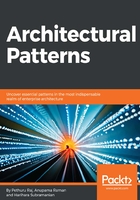
上QQ阅读APP看书,第一时间看更新
Distribution of functional requirements in a client-server pattern
Clients are broadly classified into the following two major categories:
- Fat client: Most of the functional services are performed by the client component. One classic example of a fat client is a file server.
- Thin client: If it is a thin client, it relies on the server component for most of its computational capability.
The choice of the client is made based on the type of client-server pattern, which is planned and implemented in a system. For example, if the pattern involves a lot of functionality to be done on the client side, then the choice of client is typically fat client, and vice versa. The functional requirements that are discussed in this section will give a better idea regarding the choice of client and server systems for implementing specific client-server patterns.
There are various ways in which functional requirements can be implemented in a client-server pattern. The following are some of the prominent ways of implementing client-server patterns:
- The remote data access client-server pattern
- The remote presentation client-server pattern
- The split logic data client-server architecture pattern